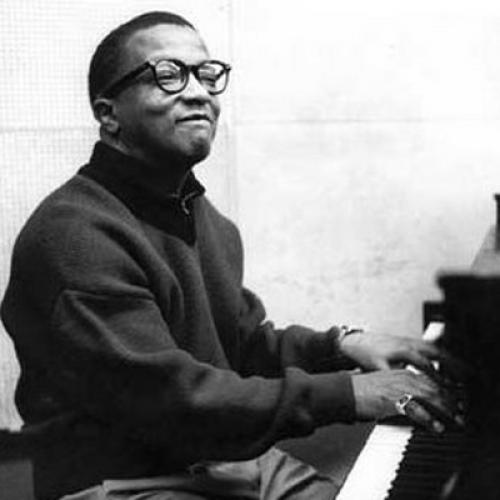It’s Billy Strayhorn’s centennial today. The great composer was born in Dayton, Ohio, on November 29, 1915. He grew up in Pittsburgh, where he attended Westinghouse High School and did additional study at the Pittsburgh Music Institute. His youthful ambition for a career as a classical music composer were thwarted by the segregation practice then largely in force in that world, so he focused on songwriting, musical theater, and jazz. While at Westinghouse, he wrote a show called Fantastic Rhythm that included songs which resurfaced in the 1990’s and are now part of the Strayhorn canon. (Here the title song is played by Bill Charlap.)
When Duke Ellington was in Pittsburgh in 1938, a mutual friend arranged an audition for Strayhorn, and while Duke sat quietly in his dressing room getting his hair done, the 23-year-old played two renditions of “Sophisticated Lady.” According to David Hajdu’s groundbreaking biography of Strayhorn, Lush Life, the first was a virtual copy of how Ellington played it; the second, a peppier version containing the modernistic leanings that Strayhorn would soon add to what mystified observers called the “Ellington effect.” He did the same with “Solitude,” and Ellington was so impressed that he gave Strayhorn the assignment of writing an arrangement of “Two Sleepy People” for the band and its vocalist Ivie Anderson. He was hired before the end of that week’s Pittsburgh engagement and told to report for duty at Ellington’s home in Harlem.

Duke’s directions for getting to his New York residence by subway began, “Take the A Train.” That became the inspiration, and the opening line, of the most famous song Strayhorn ever composed. He completed “Take the ‘A’ Train” in 1939, and it was recorded two years later by the Ellington orchestra as an instrumental featuring the band’s new trumpeter, Ray Nance. It promptly became Ellington’s theme song and was played at virtually every one of the thousands of performances he presented before his death in 1974. Here it’s played by Strayhorn as the encore at an Ellington concert. (Don’t mind Paul Gonsalves, who’s fast asleep, a not uncommon sight even in the midst of rousing concert fare. When the tenorman was called on to blow, he always took care of business.)
Strayhorn composed “Isfahan,” the best-known movement from the Far East Suite in 1963 under the title, “Elf.” Here it’s introduced by Johnny Hodges in 1965 with Ellington holding the score. Hodges’s exquisite alto playing gave voice to the yearning hope of Strayhorn’s great ballads, beginning with “Day Dream” in 1941 and continuing through Billy’s final composition, “Blood Count,” in 1967.
The first Duke Ellington album I ever purchased was his memorial tribute to Strayhorn, …And His Mother Called Him Bill. I bought it at M. Steinert & Sons on Main Street in Worcester. Steinert’s was a piano store that stocked a small number of albums, almost exclusively classical, RCA Red Seal foremost among them, and a handful on RCA Victor. The label was then reissuing its indispensable Old Wine/New Bottles series, through which I first heard Coleman Hawkins, Fats Waller, Benny Goodman, the Ellington Orchestra of the 20s, and Ellington small groups of the early 40s led by Johnny Hodges and Rex Stewart.

But the first was Duke’s album of Strayhorn compositions, about which I knew nothing. I might have recognized “Take the A Train,” but it wasn’t among the collection’s 13 titles. What intrigued me and convinced me to part with my hard-earned $3.98 was the title of the opening tune on Side B, “The Intimacy of the Blues.” I listened to it immediately when I got home, and it suddenly opened me up to the profoundly moving experience of hearing jazzmen play the blues. Not the vocal blues, not string-bending guitar blues, not the bluesy feel of soul music and gospel, but the sublime expressiveness of Ellington’s piano, Johnny Hodges’ alto, Cat Anderson’s plunger-muted trumpet set against the reeds with Harry Carney’s baritone on top, Jimmy Hamilton’s clarinet set against the brass, the wonderful symmetry of the arrangement, and the relaxed “intimacy” of the rhythm section. That was 47 years ago, and nothing’s been the same since.
